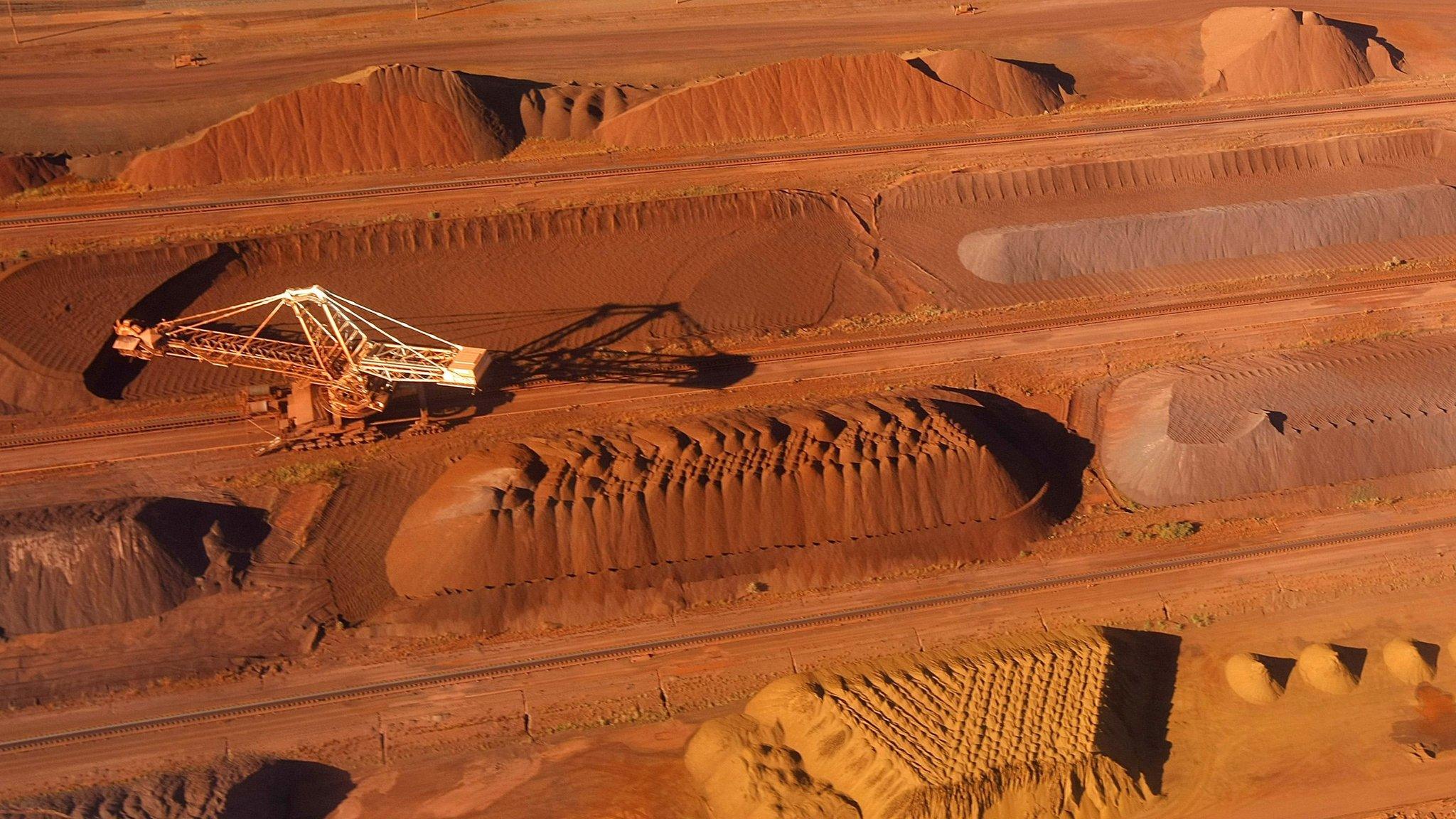Australian mining towns reel from iron ore price dive
- Published
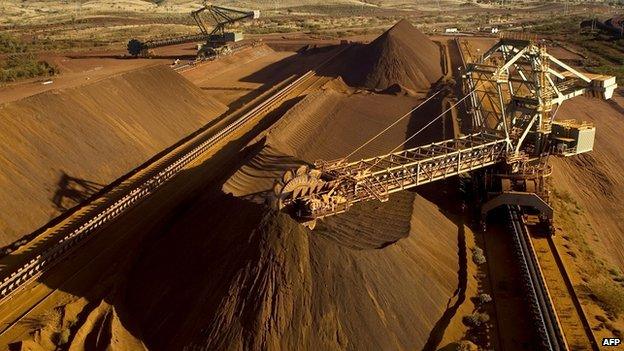
Iron ore is key to Australia's economy
Australia's treasurer has revealed that a plunge in the price of the country's biggest export, iron ore, has blown a huge hole in the national budget. With coal mining communities already struggling, iron ore towns are now feeling the first wave of shocks that will ripple through Australia's economy.
One such town, Port Hedland in Western Australia's remote Pilbara district, has seen hardship before but this time round it will be tough, according to Port Hedland Chamber of Commerce managing secretary Arnold Carter.
"Everyone is worried," the 87-year-old former deputy mayor told the BBC.
"Fear of the unknown is the biggest handicap. Miners won't spend when they can't see past the end of next week," he said.
On Friday, mid-tier iron ore miner Atlas Iron announced it would mothball its operations in the remote town, 1,660 km (1,030 miles) north of Perth. Atlas employs about 500 people across its production assets and another 75 people in its Perth office.
Contractors hurting
But it is more than direct jobs that are at stake, Mr Carter said.
"It goes all the way down the line to the subcontractors and where they spend their money, such as the shops in the town," he said.
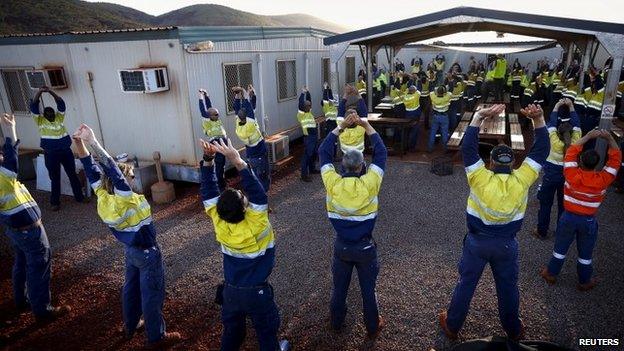
Mining is a major industry in Pilbara
"Those hurting the most are the small suppliers. Atlas has an army of subcontractors that supply fuel, trucks, tools, and even accommodation for the fly-in, fly-out workers.
"Thankfully, Atlas is only one of a number of projects in Port Hedland. We're hoping it doesn't get any worse."
But by Monday, trucking group McAleese had asked the Australian Stock Exchange to suspend trading in its shares, while it considered the implications of losing its biggest customer, Atlas, and half its earnings. It had employed 400 workers and provided 100 trucks to Atlas.
"Drivers are just one set of workers who will see their cash dry up within weeks," said Mr Carter.
"Even people who make the meals and beds [in town] will now be sitting around without an income."
At US$47 a tonne the price of iron ore is less than half its level year ago. It is a long way from the days when you had to pay A$2,500 (US$1,894) a week to rent a house in Port Hedland - more than some Australians earn in a month.
Shareholders and owners are seeing value evaporate, too. One of the most high profile is Australian businessman and politician Clive Palmer. His prized asset, the Sino Iron project in the Pilbara, has been written down by A$2.3bn (£1.9bn; $1.7bn).

A downturn in the Chinese property sector has had an impact
Citigroup is forecasting iron ore to slide to below US$40 a tonne during the year and remain below that level for the next three years, potentially wiping out the profitability of almost every Australian iron ore miner other than the big two, Rio Tinto and BHP Billiton.
Australian Federal Treasurer Joe Hockey has gone further, factoring in a fall to US$35 a tonne.
That price would reduce budget revenue forecasts by A$25bn (£13bn; $19bn) over the next four years.
It is not just Western Australia and iron ore that is feeling the downturn.
The price of coal has fallen to just above US$60 per metric ton, down from US$140 four years ago and leading to the closure of mines on Australia's east coast.
'This one is different'
The fall in the price of iron and coal are linked, according to Janu Chan, Senior Economist at St George Bank.
"A downturn in the Chinese property sector means less coal for energy and iron for building are needed, adding to a glut of commodities."
China's coal imports fell by nearly half in the first quarter of the year. ANZ Bank has forecast growth in China to fall to 7%, its slowest since 2009.
"Last year, Australia exported over A$40bn of coal, much of it to China," said Ms Chan. "This year, there isn't nearly as much."
Mr Carter has lived in Port Hedland for over half a century. He has seen some rough times in what can be a tough environment but this commodity downturn is shaking the mining industry.
"Previously, we had short-term slowdowns, and even in 2008 it was just a question of suspending construction for a while but mines carried on operating," he said.
"We quickly bounced back, and the boom times rolled again.
"This is the fourth downturn I've suffered but this one is different. This is the sharpest decline in ore prices I've ever seen. It's nasty and no-one is immune."
- Published13 April 2015
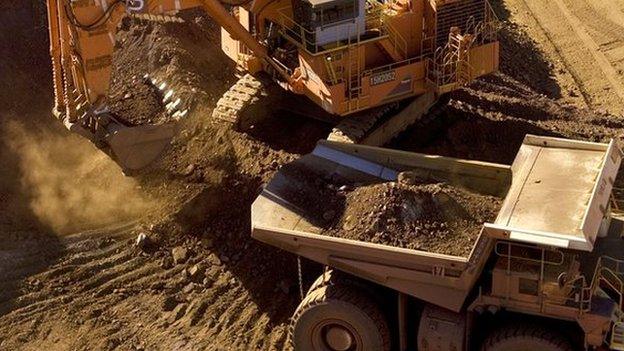
- Published4 January 2015
.jpg)
- Published21 October 2014
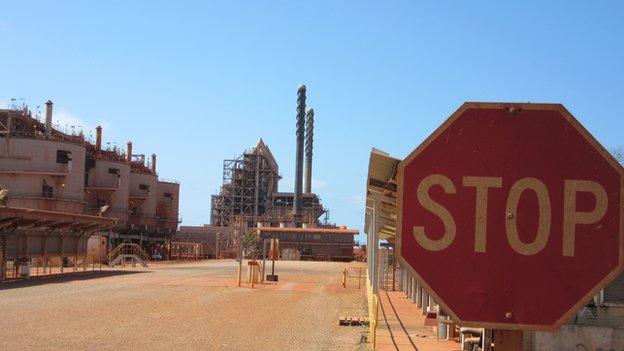
- Published25 August 2013
